Easily harness the decluttering power of the Category Consolidation Approach – if you constantly try and fail to 'eat the elephant whole', experts say this one's for you
Take the stress out of streamlining with this tried-and-tested method that home organizing pros love
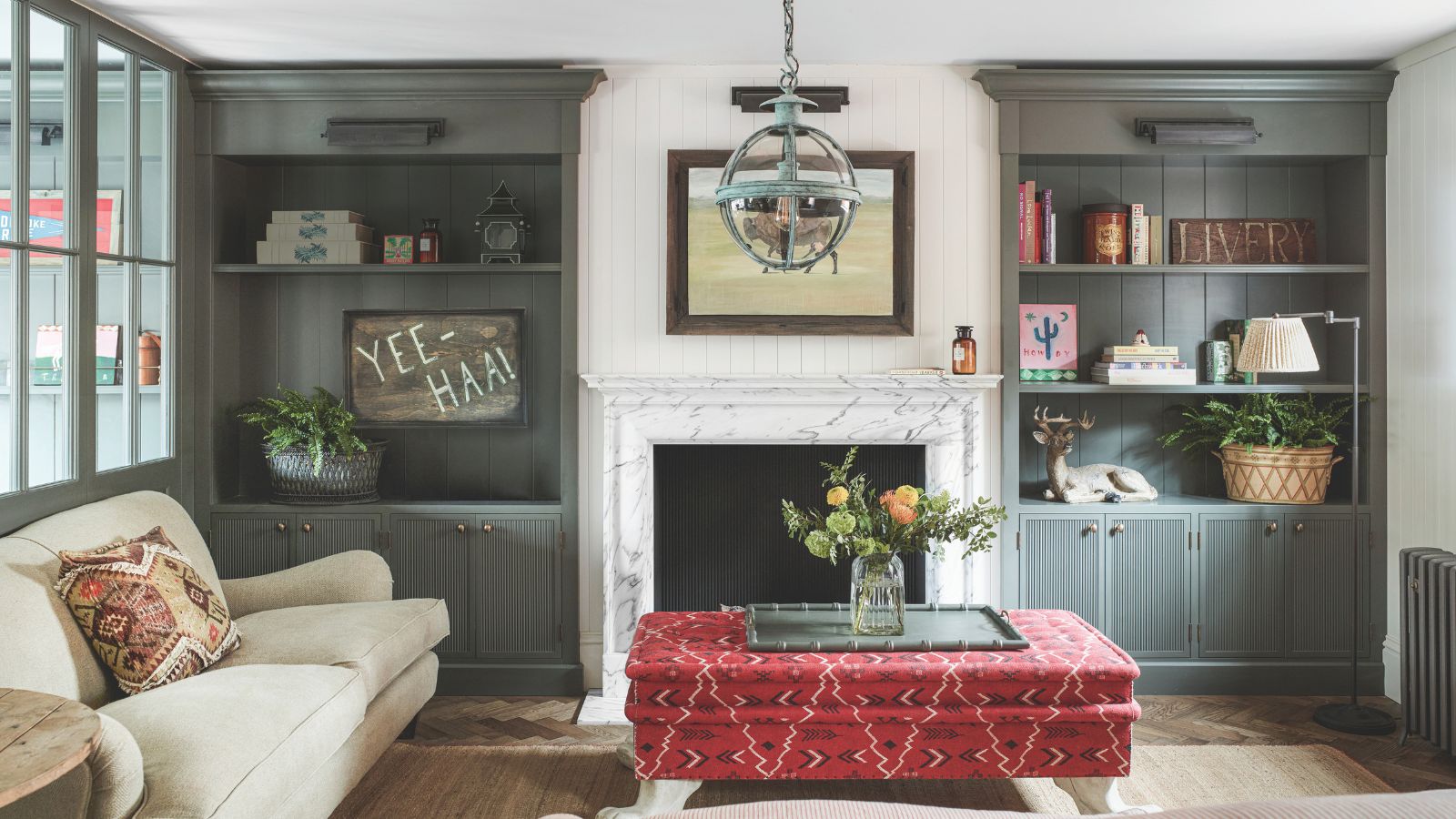

Decluttering can feel daunting, which is why he 'Category Consolidation Approach' offers a structured method to tackle clutter by focusing on one category at a time.
Bringing every item belonging in one category together will make decluttering more manageable and less overwhelming, experts say, expecially for people who have consistently tried and failed to tackle major decluttering projects.
From how to do it to who it's best for, professional home organizers reveal everything you need to know about this ingenious method, which incorporates several effective decluttering tips.
What is the Category Consolidation Approach?
The Category Consolidation Approach involves gathering all items of a specific category from various locations in your home and sorting them collectively. By consolidating, you can see the total volume of items you own in that category, making it easier to make informed decisions about what to keep, donate, or discard.
This holistic view helps prevent the common mistake of underestimating how much you own.
Professional organizer and certified KonMari® consultant Amélie Saint-Jacques says, 'The Category Consolidation Approach for decluttering is actually one of the tenets of the KonMari® Method. The basic principle is that we declutter by category instead of by location.
'It allows people to have a much better understanding of what and how much they own and, therefore, what and how much is actually superfluous. This is particularly helpful for people who have stored the same type of item in various places.'
Design expertise in your inbox – from inspiring decorating ideas and beautiful celebrity homes to practical gardening advice and shopping round-ups.
Francesca Verri, owner of Verri Organized, says, 'I liken what clutter does to the brain to clothes in a laundry basket. Part of what makes laundry so unappealing is the inability of your brain to match things quickly. With the laundry, you’ve got different colored socks, undergarments, a few t-shirts, a sweatshirt, etc. If your laundry came out of the dryer in categories, you’d approach the task differently.
'The same goes for decluttering. The Category Consolidation Approach helps delineate by category to make the task of decluttering as a whole feel more appealing.'
To help move items so they're all in one place, ready for sorting through, Verri recommends this 20-pack of Supplyhut Medium Cardboard Moving Boxes from Amazon, adding, 'They aren’t too big, have handles for moving easily, and plenty of room for you to document what’s inside.'
Saint-Jacques recommends using Hefty Strong 30-Gallon Trash Bags from Amazon, plus these Amazon Basics Storage Boxes.
What areas of the home is it good for?
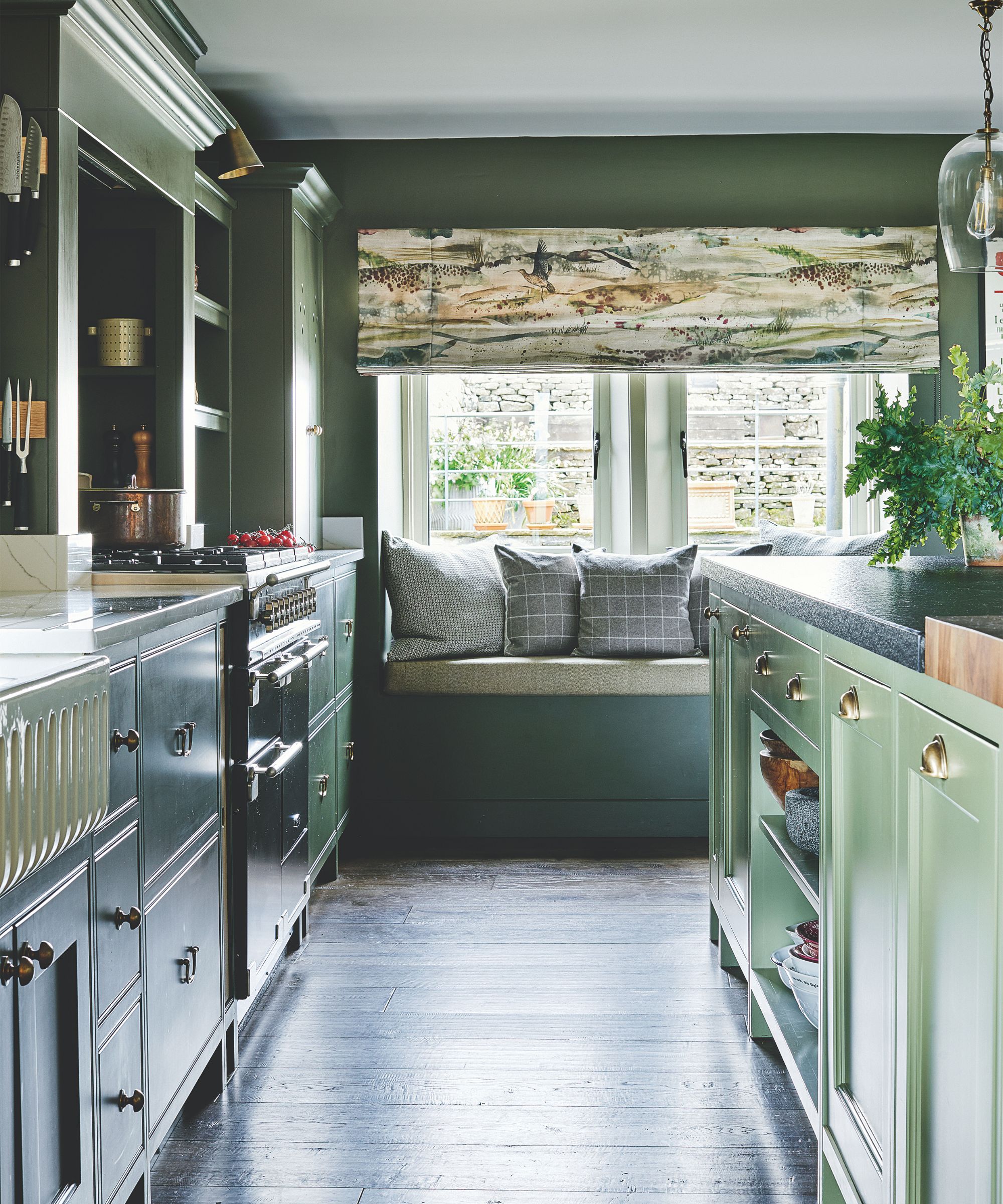
The kitchen is among several spaces well-suited to the Category Consolidation Approach for decluttering your home.
The Category Consolidation Approach is particularly effective for clothing, books, kitchen utensils, and office supplies. These items often accumulate in multiple areas, and the fact that much of it is hidden in drawers or cabinets is likely the reason clutter keeps creeping back into your home.
Verri says, 'The great thing about this approach is it can be applied to any area of the home because it is more of a process for decluttering than something designated solely for one area.
'However, I find using this approach is especially effective in the kitchen. The kitchen houses many different categories: from plates, cups and wooden spoons, to rogue batteries and all kinds of other miscellaneousness found in any number of junk drawers.
'To utilize this approach in the kitchen, simply open a cabinet or drawer and choose one category within it. For instance, if you open a cabinet and you see cups, glasses and water bottles, you might start by choosing mugs and see where else in the kitchen you have them stored.
'Once you collect all the cups you have all the information in front of you to see how many you have. And then you can measure it up against how many you use and need, and the space you have to store them.'
Where is it not good for?

The Category Consolidation Approach may be less suited to large, sentimental collections, such as homes with hundreds of books.
Bulky or sentimental items are among those that might be less suited to the Category Consolidation Approach.
Karina Toner, operations manager at Spekless Cleaning, explains, 'This approach is less effective for large mixed-use areas like garages or storage sheds where items don’t belong to a specific category, or for sentimental clutter (like keepsakes) where emotional attachment may slow progress.
'It can also feel overwhelming in homes where categories are very large – like if someone owns 300 books or 50 pairs of shoes – unless broken down into subcategories.'
How do you do the Category Consolidation Approach?

The Category Consolidation Approach for decluttering features five simple steps.
The Category Consolidation Approach follows a simple process that addresses one group of items at a time.
Toner explains, 'One of the best things about this approach is its relative simplicity. The steps go like this:
- Pick a category, not a room. For example, you might choose cleaning products, or t-shirts.
- Gather all items from that category from across the home into one place – whether on a table, bed, or even the middle of the floor. Don't forget any items you've put away because they're out of season, for instance sweaters.
- Assess the group as a whole. Ask yourself, 'Do I need this many?' and 'Do I actually use this?'
- Sort into ‘keep,’ ‘donate,’ or ‘discard'. Be honest – if you have six of something, keep your favorite two.
- Designate a single home for the category and organize it for easy access.
'Helpful tips I recommend include starting with non-emotional items to build momentum, having a timer to keep the process focused, and using clear bins with labels to reorganize in a maintainable system.'
Toner recommends mDesign Plastic Storage Bins with Handles from Amazon. They're clear, stackable, and work in any room from pantry to bathroom.
When it comes to sorting through a category, consider the 20/20 rule. If needed, could the item be easily replaced in 20 minutes or for $20? If yes, it may be time to let it go.
Look out also for dust, which can act as a low-effort honesty tool. Professional organizer Marie Potter, founder of Marie Potter Organizing Solutions, explains, 'If an item in your home is layered with dust, that's a red flag. It needs to be donated, sold, recycled or tossed – either that, or you need to seriously up your dusting game!'
Saint-Jacques adds, 'I find three questions helpful in the sorting process. For each item, ask yourself whether it sparks joy, whether you actually use it, and whether it's helping to bring you closer to the vision you have for your ideal self. Items that don't meet this test can be donated or discarded.'
Who is the approach good for?

Whether in your pantry, kitchen, bedroom or bathroom, the Category Consolidation Approach can help limit belongings and avoid overflow.
The Category Consolidation Method is ideal for individuals who feel overwhelmed by clutter and don't know where to start. By focusing on one category at a time, it reduces decision fatigue and provides a clear path forward.
Verri says, 'I think this approach works best for anyone who finds their clutter overwhelming, or who starts and stops but never completes decluttering. Because by its nature, you are choosing one category at a time, the Category Consolidation Approach prevents you from trying to eat the elephant whole, making it more manageable, one bite at a time.'
Toner adds, 'This approach is also great for over-buyers or bulk shoppers, who often forget what they already own, and people with ADHD or neurodivergent individuals who benefit from visual clarity and grouping.'
Much like the ODT method, this simple approach helps bring order to a task that can seem so daunting it puts people off starting.
Organizing essentials
To support your decluttering journey, our pros recommend these organizational products that help you do the job, neatly contain categories within a specific space, or label things clearly.
All prices were correct at the time of publication.
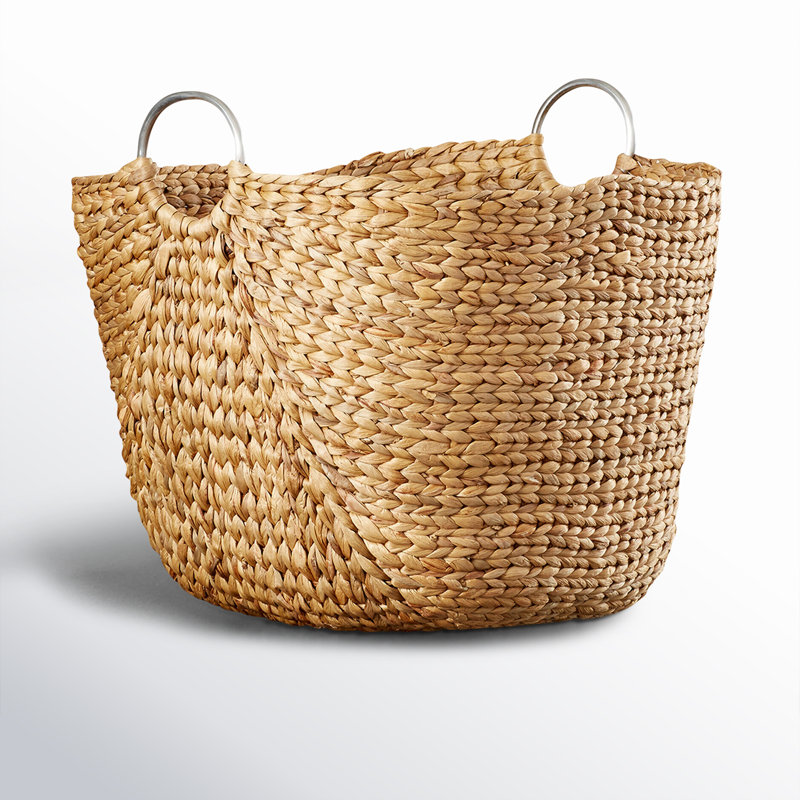
These large but elegant handwoven baskets make ideal storage bins or laundry baskets. The round silver metal handles make them easy to carry from room to room, while its unfinished, organic look adds a touch of rustic charm.
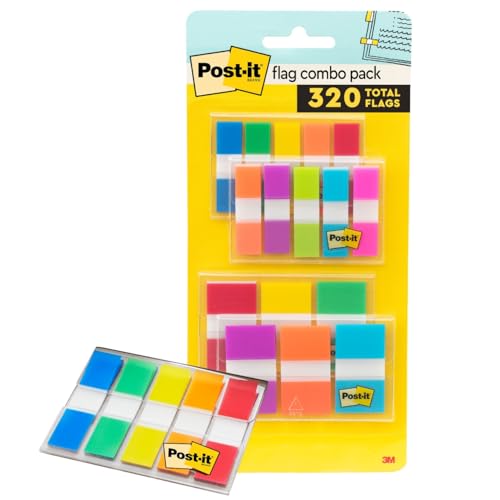
Home cleaning and organization pro Karina Toner recommends this handy pack of more than 300 sticky tabs. She says, 'Great for labeling categories or creating temporary zones while sorting, I use these all the time to keep track of subcategories.'
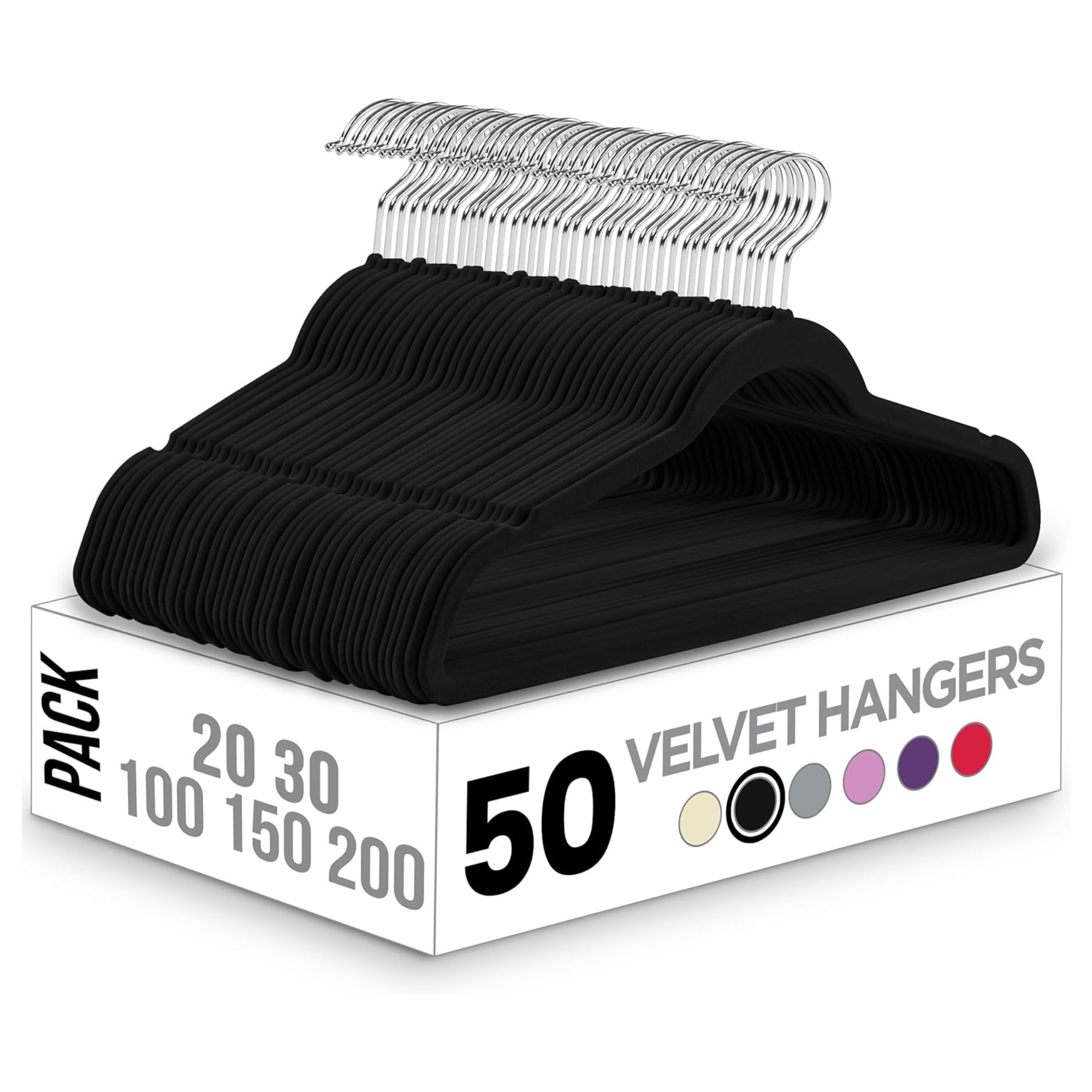
Home organization pro Francesca Verri recommends this 50-pack of velvet hangers, with 360-degree rotation. She says, 'They're an excellent way to organize your closet by category so you can easily see what you have.'
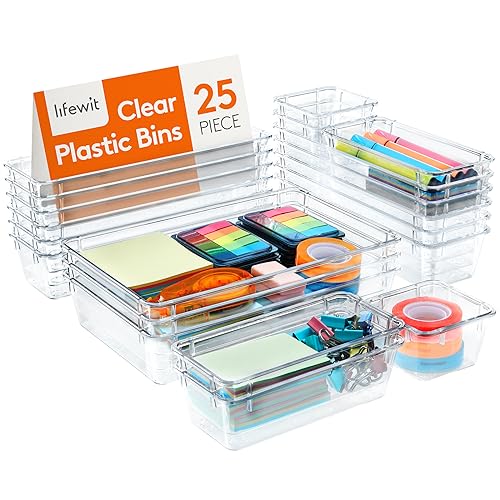
This versatile, 25-piece storage set is ideal for getting your smallest items in order. The clear containers come in various sizes, so you easily match to your drawer space. They're also easy to clean with a gentle wipe or quick water rinse.
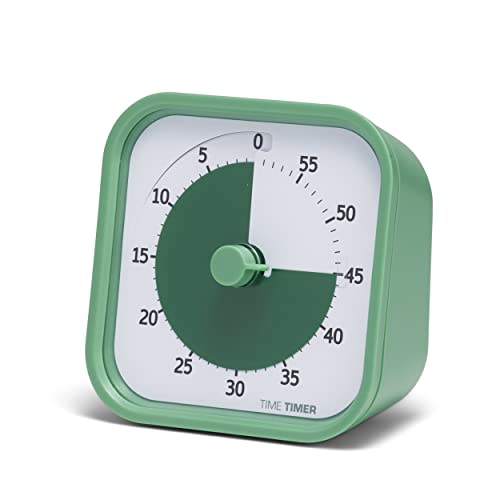
This visual timer, which comes in six color options, is ideal for breaking decluttering into manageable amounts. The central color section disappears as the time runs out for a clear representation of how long you have left.
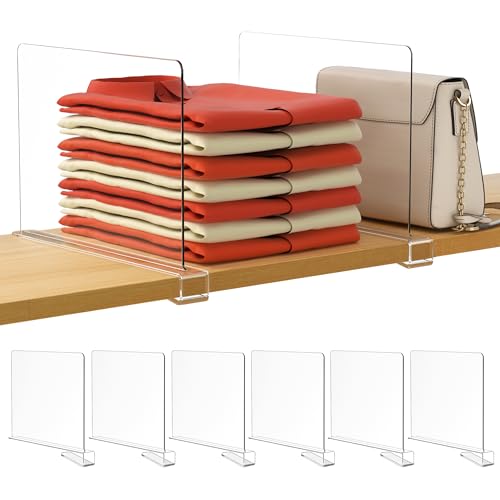
These handy closet dividers, which come in a pack of six, bring a sense of order to your closet. They also create sections so you can more easily keep your items to a manageable amount, seeing instantly when it's time to purge.
Meet the experts

A member of the National Association of Productivity and Organizing Professionals (NAPO), Amélie is a Certified KonMari® Consultant who formed Amelie Organizes in 2022 to help people in the greater San Antonio, TX, area take control of their space and life.

Francesca has more than 20 years of experience using minimalist organizational habits and theories to empower clients to make lifestyle changes that produce real and lasting results. She is the owner and founder of Verri Organized.

With extensive contributions in Homes & Gardens, Real Homes, The Spruce, and many more, professional cleaner Karina has extensive knowledge of both commercial and residential cleaning as operation manager at Spekless.

Marie is an award-winning professional organizer, with more than 20 years' experience in the industry. Fully qualified in both in-person and virtual home organizing, she is a member of Professional Organizers in Canada (POC), and a proud recipient of the POC President’s Award.
So there you have it – everything you need to know about the Category Consolidation Approach, from who it works best for, to exactly how to do it.
By implementing this expert approach and utilizing these organizational tools, you can transform your cluttered spaces into tidy, functional areas.
Next, learn how to organize any space in six steps for maximum functionality.

With more than a decade of experience writing news, lifestyle, consumer, and human interest articles for a wide range of national and international publications, Andy is a highly-qualified journalist writing features for the national press. From front porch to backyard, attic to basement, Andy has written about every area of the home. He specialises in bringing together the best industry expertise to answer all of your most pressing home and garden questions about seasonal and everyday cleaning, decluttering, organizing and DIY.